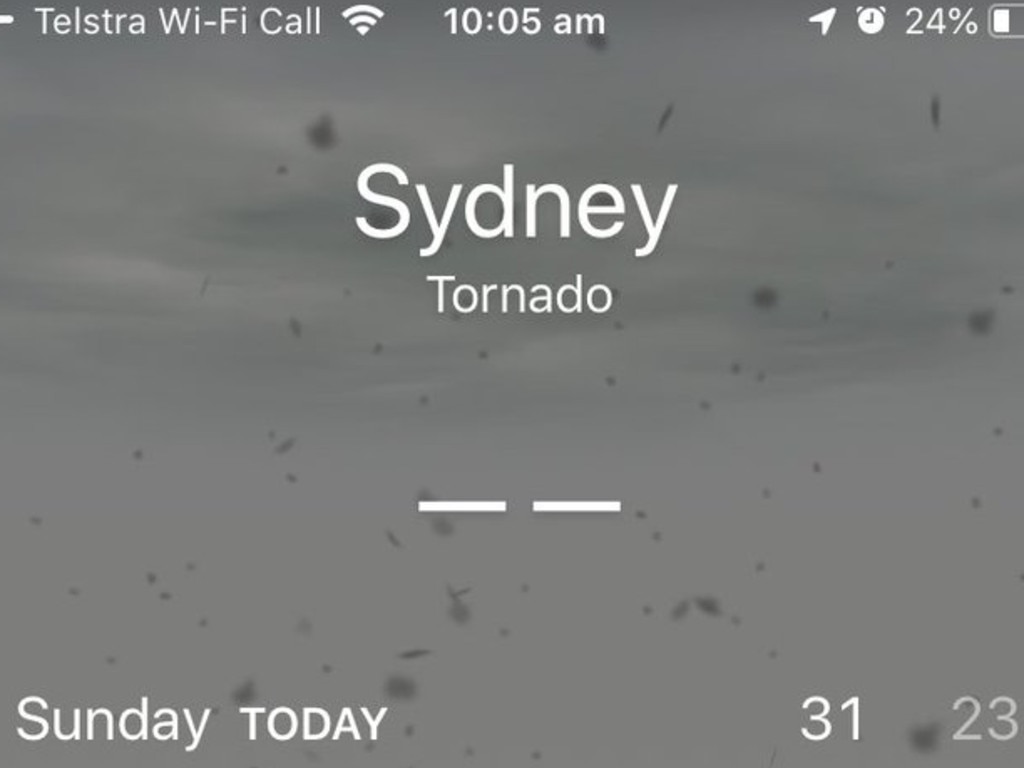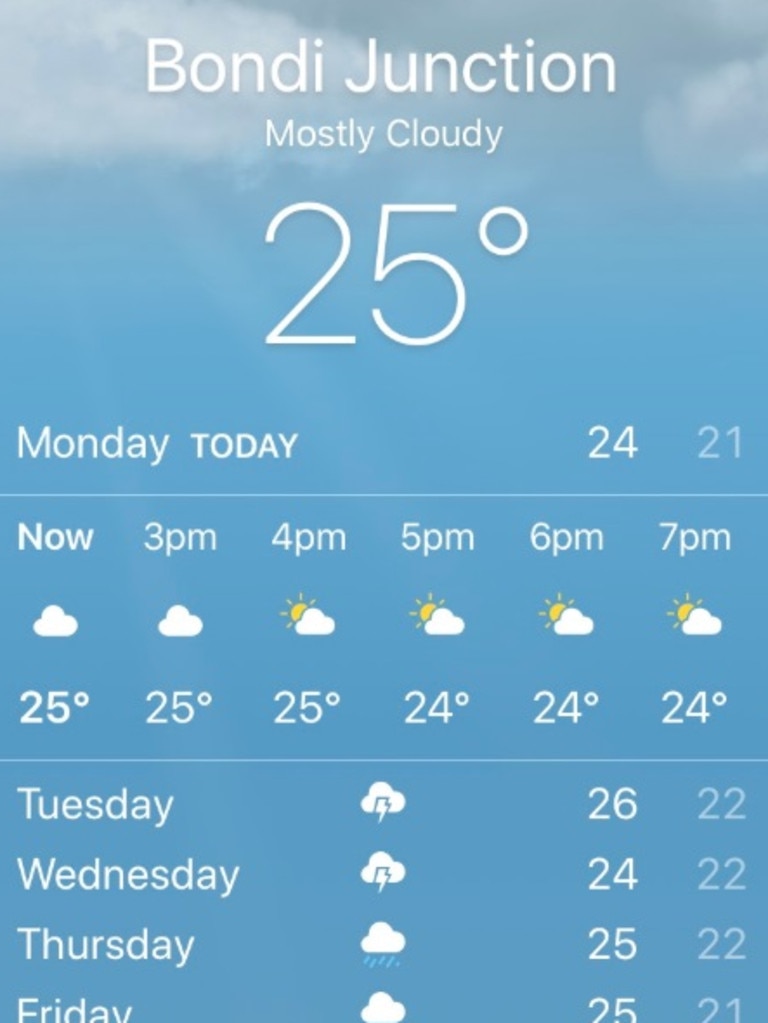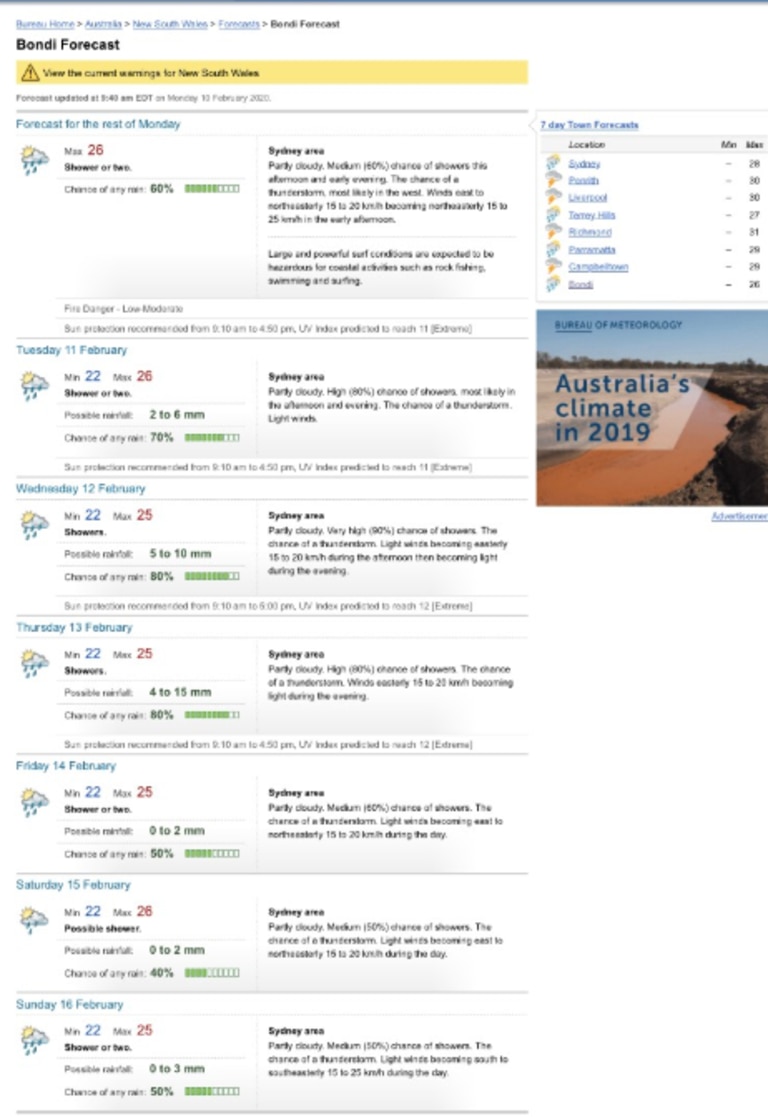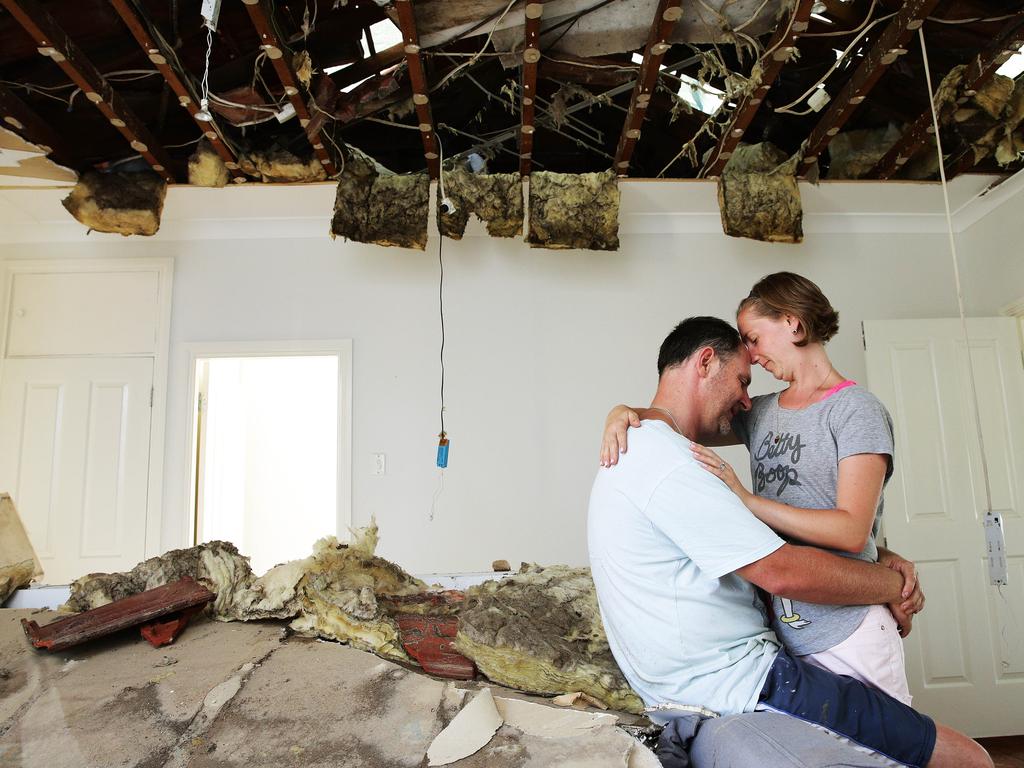Rain when it’s sunny? Non-existent tornadoes? Questions asked about accuracy of Apple iPhone weather app
Apple users have complained the iPhone weather app got Sydney’s deluge drastically wrong. That’s nothing compared to other warnings.
Do you remember the tornado that swept through Sydney on December 19? What about the one on Australia Day?
Surely Melbourne’s November 2019 tornado, that barrelled through inner-city Prahran, is etched into the memory banks? No? Well that’s not a huge surprise, because none of these rather dramatic weather events appear to have happened.
But if you have an iPhone and opened the pre-installed weather app, that’s the forecast you would have received. The preponderance of phantom tornadoes as well as some very suspect forecasts during the recent Sydney rain event has led many to wonder just how accurate the Apple app actually is.
Both Apple and the company which supplies the weather data have pointed the finger at each other as to why the app may be a bit whack.
Than Pham, from Epping in Sydney’s north, was one of those people who opened his Apple weather app last month to discover he was about to be swept off his feet by a tornado.
“I was like, OK we’re about to have a tornado. I was surprised because January 26 was a hot day,” he told news.com.au.

Mr Pham said he refreshed the app and still it warned of the very specific impeding extreme weather event.
Yet Bureau of Meteorology (BOM) data shows that on January 26, Sydney saw a high of 32C, had 9.6 hours of sun and 0.2mm of rain. The maximum wind gust was a brisk 59km/h. No tornadoes were reported.
Social media users from such usually tornado-less cites as London, Glasgow and New York have also had their iPhone app warn them of just such a weather event which doesn’t come close to eventuating.
SYDNEY RAIN PAIN
It happened again, albeit less dramatically, over the last few days. Like many Sydneysiders, Mr Pham was glued to his phone app wondering when the record-breaking rain would break.
“On Monday, the app was telling us it would rain all day. Actually, it was quite sunny.”
Mr Pham’s experience with the app reflected that of a number of readers who have said their Apple weather app relayed forecasts that seemed wildly inaccurate and out of kilter with the BOM.
A screenshot of the app on Monday displayed icons clearly showing thunderstorms for Tuesday and Wednesday and rain for the rest of the week.


The BOM forecast showed some rain. Thunderstorms were mentioned, but it was only a “chance” and even then most likely on the other side of the city. Even the rain was likely only to be a few millimetres worth – not the deluge of 180mm on Sunday.
“It does reflect badly on Apple. It’s the default weather app you’re given and it shows up on your lock screen. You expect it to be up to date and consistent. It’s not reliable,” said Mr Pham.
“My partner has an Android phone and that tells her the proper temperature at the proper time.”
It’s not the first time the app has come in for criticism. In March 2018, when much of Britain shivered during a “snow bomb”, iPhone users complained the app massively underplayed the threat. In some cases, the app showed a sunny day or a small chance of snow while blizzards raged outside, reported The Sun.
Hmmm. I know it’s Melbourne, but TORNADO? pic.twitter.com/Nm0k8ox0nC
— Alison 🔥💔🇦🇺 🨠🦘😢🔥 (@alisonsbread) November 4, 2019
What’s going on in Sydney? #sydney #tornado pic.twitter.com/uecmHRIyVe
— Tania Dunn (@DunnTania) December 20, 2019
I have a toxic relationship with the iPhone weather app because it lies to me every day but I still stick around hoping one day it might change
— Really Nice Guy (@yaneezy__) May 6, 2019
Apple specialises in many things; meteorology is not one of its fortes.
The Apple weather app is fed by data from the US Weather Channel, part of the Weather Company division of IBM.
Apple didn’t comment on the app but directed inquiries to the Weather Company. But Melissa Medori, a spokeswoman for the IBM firm, said it wasn’t their forecasts that were wrong and they were taking up the matter with Apple.
“We are aware of the issue, which we have confirmed is not a result of inaccurate forecasting. We are working closely with Apple to resolve it as quickly as possible.”
Ms Medori said concerned users should use the Weather Channel app instead.
WEATHER IS COMPLEX AND UNPREDICTABLE
A study by ForecastWatch which assesses the accuracy of weather outlooks showed Weather Company is the US’ most accurate forecaster getting it right 77.5 per cent of the time.
That number might seem quite low but weather is notoriously difficult to predict. Storms alter direction, clouds fail to release their rain. Even the BOM was forecasting more rain on Monday then eventuated.
“The data which IBM uses would be just as accurate as modelling data which the BOM or we use,” Sky News Weather channel meteorologist Tom Saunders said.
He speculated that the BOM might quality check its Australian weather data more often than IBM’s weather division, which is based near Boston.
Relaying the complexity of a forecast in a single icon on an app can be a challenge. It is open to confusion if users rely solely on a tiny picture of a thundery cloud or sun to set them up for the day.
On the Apple app you scroll down to get the full detail on the likelihood of that thunderstorm or shower.
Also, different weather organisations use different models to predict the weather. The BOM’s model is uniquely tailored to Australia. It’s great for forecasting the weather in Perth, perhaps less so Paris.

YEP, WE DO GET TORNADOES
As for those mystery tornadoes, well they actually happen in Australia and more than you might think as they are so quick.
According to the BOM, there are dozens of tornadoes sighted every year and probably far more that go unnoticed.
“Many of the stronger tornadoes in Australia are associated with supercell thunderstorms,” the BOM stated.
“The tornado itself produces a violent wind that begins and ends quickly. It will last from several seconds to at most a few minutes and be accompanied by a variety of sounds caused by the damage to buildings and trees.”
One of Australia’s most famous tornadoes smashed its way through Sydney’s coastal suburbs in December 2015 delivering a maximum wind gust of 213km/h.
Sky’s Mr Saunders said that on January 26 thunderstorms did indeed rumble in Sydney, but there were no reports of a tornado.
Mr Pham is not convinced that, on that warm January day, with almost 10 hours of sunshine, an extreme weather event took place.
“I can assure you, no tornado descended over Epping.”




